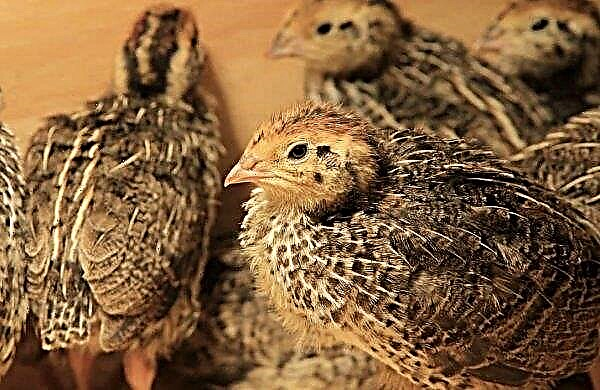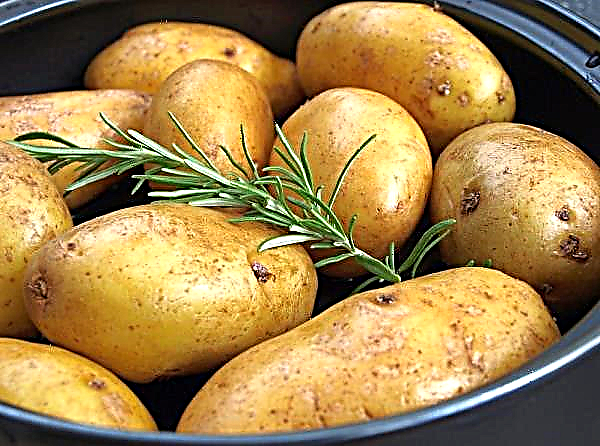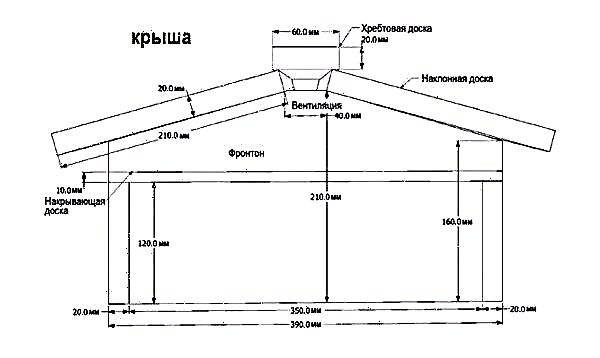Chickens are most often kept in order to get eggs from them. Several factors affect the level of egg production. You can read about how many eggs a hen can bring for a certain period of time and how to keep this indicator at a high level constantly, in our material.
How many eggs does a chicken carry?
Chickens are divided into 3 directions: Iegg meat-egg and meat. The largest number of eggs are representatives of the first direction; the other two have a much lower rate. Most eggs are brought by hens in poultry farms, where all the recommended temperature and humidity indicators, lighting parameters are observed, compound feeds and premixes with vitamin and mineral additives are given. In households, these rates are slightly lower.
Most eggs are brought by hens in poultry farms, where all the recommended temperature and humidity indicators, lighting parameters are observed, compound feeds and premixes with vitamin and mineral additives are given. In households, these rates are slightly lower.
Did you know? Today, the largest number of records belongs to representatives of the Leghorn egg breed. In the mid-1950s, one of them hit the pages of the Guinness Book of Records, laying a 454-gram egg. Note that ordinary laying hens on average, they bring eggs of 70 g.
In a day
Ordinary chickens do not rush daily. Well, those who still managed to bring an egg every day become record holders and deserve to even claim to be entered in the Guinness Book of Records. So, one of the record holders is the leggorn laying hen, from which it was possible to get a maximum of 361 eggs in a year. Ordinary hens, not claiming to set a record, bring 1 piece 1 time in 2-3 days.
So, one of the record holders is the leggorn laying hen, from which it was possible to get a maximum of 361 eggs in a year. Ordinary hens, not claiming to set a record, bring 1 piece 1 time in 2-3 days.
In Week
In the peak summer period of egg production, representatives of the most egg-laying breeds are able to lay an average of 4–5 eggs in 7 days. Meat eggs reach indicators of 3-4 pieces, meat - in 2-3.
Per month
In warm weather, the interval between receiving eggs from birds can be 1 day, so the level of egg production in 30 days reaches 15–26 eggs. So many are able to bring egg layers. In universal individuals, these indicators are 13–15, in meat ones, 10–13. In the colder months, productivity will be much lower.
So many are able to bring egg layers. In universal individuals, these indicators are 13–15, in meat ones, 10–13. In the colder months, productivity will be much lower.
In year
Over a year, egg laying hens visit the nest 200–250 times, meat and egg laying - 160–200 times, and meat laying - 120–150.
Important! There are periods in a year when chickens sharply reduce productivity and even stop rushing at all. This usually happens during the renewal of feathers and hatching of chicks in the winter months. However if ensure a long daylight hours in the chicken coop, comfortable heating, good nutrition balance, then a decrease in egg production in winter can be avoided.
Factors Affecting Egg Laying of Chickens
The performance of egg chickens is influenced by several points:
- breed;
- the conditions in which the birds are kept;
- age;
- season;
- well-being.
Breed
As we already noted, the largest number of eggs is laid by egg laying hens, the average by meat-laying and the smallest by meat. Let's consider which breeds are the most egg-laying in their directions.
| Breed name | Annual number of eggs |
| Egg direction: | |
| Leggorn | up to 300 |
| Highsex Brown | up to 320 |
| Broken brown | up to 320 |
| Isa Brown | up to 320 |
| Hi-line | up to 340 |
| Meat direction: | |
| Australorp | up to 200 |
| Foxy chick | up to 250 |
| Plymouth Rock | up to 170 |
| Rhode Island | up to 170 |
| Kuchinsky anniversary | up to 200 |
| Meat direction: | |
| Brahma | up to 120 |
| Kokhinhin | up to 120 |
| Cornish | up to 140 |
| Goodan | up to 160 |
| Faverol | up to 180 |
Conditions of detention
In order to properly maintain chickens and prevent their productivity from decreasing, you need to know what parameters are required so that violations in the process of egg production do not occur. So, for stable productivity it is necessary to provide the following parameters in the poultry housing:
- air temperature - 18–22 ° С, not lower than 5 ° С;
- humidity indicators of air - 60–70%;
- Illumination - 12-14 hours of daylight.
 It is important to ensure that there are no sudden changes in temperature in the house, drafts do not walk, and ventilation works stably. It is necessary to exclude the overpopulation of the chicken coop, adhering to the norm of 4-5 individuals per 1 square. m at floor keeping and up to 10 individuals per 1 sq. m. m with cell living.
It is important to ensure that there are no sudden changes in temperature in the house, drafts do not walk, and ventilation works stably. It is necessary to exclude the overpopulation of the chicken coop, adhering to the norm of 4-5 individuals per 1 square. m at floor keeping and up to 10 individuals per 1 sq. m. m with cell living.Did you know? Chickens do not need cocks to lay eggs. Males are in demand only when it is necessary to get chickens, i.e., to fertilize an egg. Eggs that have not passed fertilization cannot be distinguished from fertilized when eaten. They have the same look, taste and presence of valuable elements.
Chickens should be provided with fresh and clean water daily, as well as high-quality food containing all the necessary minerals and vitamins. In order for the chickens to rush successfully, they need to provide comfortable nests - one for 3-5 individuals.
At poultry farms, the following hen content parameters are adhered to:
- the temperature is regulated depending on age: for chickens - 33–35 ° С, then a gradual decrease to 15–18 ° С;
- humidity - 60–70%;
- cell content with a population density of 4.5 heads per 1 sq. m;
- automatic ventilation system with a winter air supply of 0.70 cubic meters. m / h, in the summer - 4 cubic meters m / h per 1 kg of weight, air velocity - 0.2–0.6 m / s in winter, 0.3–1.0 m / s in summer;
- adjustable light mode.

Season
We already mentioned that the laying hen's peak falls in the summer, and it was the summer indices that were cited. In winter, productivity can fall by 2 times, that is, from 1 chicken you can get 1 egg in 3-4 days. However, with proper care and feeding, the number of eggs may not decrease, or decrease insignificantly.
Health and age
Most eggs are able to lay eggs in the first year of onset of egg production. It will no longer be possible to achieve further excellent indicators from it - annually the level of productivity will fall by 15–20%.
Only a healthy individual can carry the maximum number of eggs. There are many diseases that lead to a significant drop in productivity or to the inability to rush at all.
Recommended Reading

First of all, these are the following ailments:
- infectious bronchitis;
- colibacillosis;
- mycoplasmosis;
- laryngotracheitis;
- bronchopneumonia;
- cold;
- avitaminosis;
- ovarian inflammation;
- cloacite;
- helminthic invasion.
At what age does the chicken begin to rush
The age of entry into the egg period is determined by the breed and the direction of the laying hen. In egg chickens, the laying process begins when they are 4–5 months old. The first eggs in universal birds form from 5–6 months of age. And from meat individuals it is possible to achieve egg laying from 7–8 months, from some - from the 9th.
How old can a chicken carry
Upon reaching the age of 3, it turns out to be impractical to grow a laying hen in a private household. At poultry farms they are kept until the age of 17 months. In industrial breeding, it is believed that the laying hen is productive until the 52nd week.
How to increase performance
In order for the indicators to be stably high, it is necessary first to bring the climatic conditions in the chicken coop to the recommended ones above:
- raise the temperature;
- adjust humidity level;
- check the operation of ventilation.
Since the feed used by chickens is of great importance for egg production, it is necessary to check whether laying hens receive a high-quality and balanced diet. In winter, when it is not possible to ensure the supply of all the necessary vitamin-mineral complex with one feed, it is necessary to introduce premixes.
The daily menu of the speeding chicken should be equipped with:
- cereals (wheat, barley, oats, corn);
- vegetables (potatoes, carrots, beets, cabbage);
- green herbs (nettle, dandelion, alfalfa, clover);
- mineral elements (calcium, phosphorus, sodium, chlorine);
- vitamins (all known, except C).
 When compiling a daily menu of laying hens, you can use the following approximate doses:
When compiling a daily menu of laying hens, you can use the following approximate doses:- cereals - 120 g;
- moistened mash - 30 g;
- boiled potatoes - 100 g;
- oilcake - 7 g;
- chalk - 3 g;
- salt - 0.5 g;
- bone meal - 2 g;
- yeast - 1 g.
It is important to understand that the menu needs to be changed. It is not necessary to feed the chicken with the same products, otherwise it will lose interest in food, eat less, and therefore reluctantly rush.
Important! Nests must always be in the same place. Changing their location can adversely affect performance.
Chickens are offered meals three times a day. In the morning they try to give cereals and boiled potatoes, bran, shell, salt. At lunchtime, mixers, vegetables, grass are put in the feeders. For dinner, pour grain.
In addition to food, chickens are given clean water and gravel, which is necessary for the stable operation of the digestive tract and high-quality digestion of food. If you want to replenish the bird's body with vitamins and minerals, you can enter the following premixes:
If you want to replenish the bird's body with vitamins and minerals, you can enter the following premixes:
- Rex vital;
- "Ryabushka";
- "Chicken pock";
- Zdravur.
So, the number of eggs laid by chickens is influenced by many reasons. To increase the level of egg production, it is necessary to normalize the climatic conditions in the house, to regularly clean, to increase the quality of food. It is also necessary to take into account the current season and breed features.












